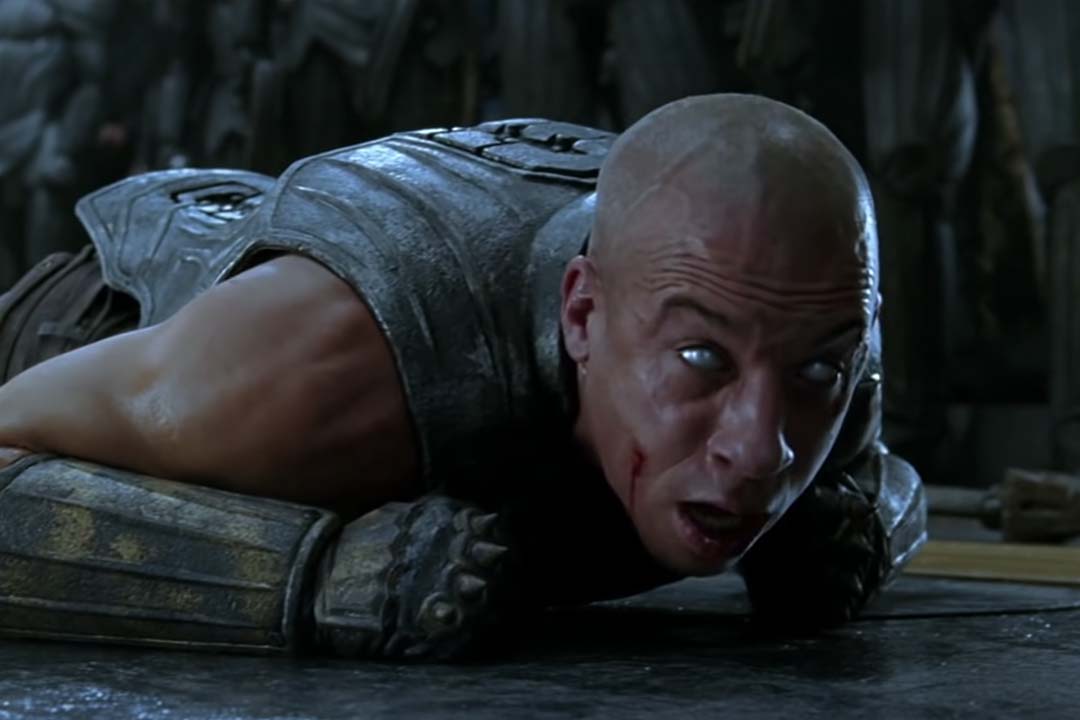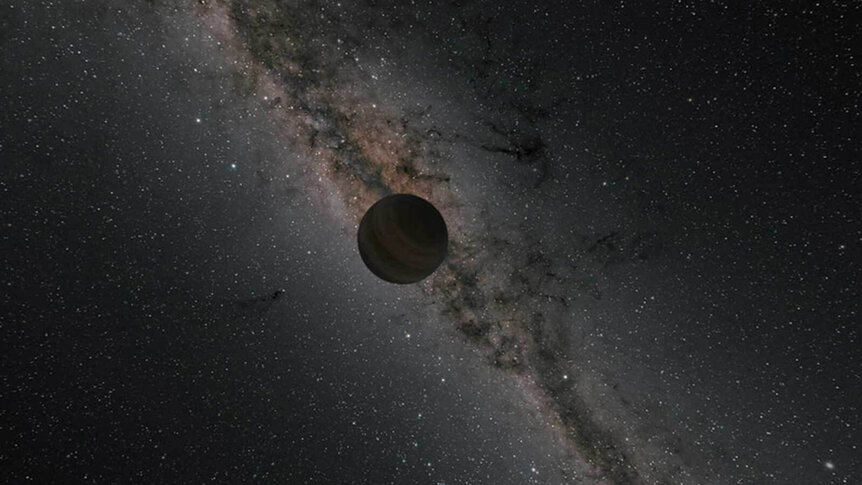Create a free profile to get unlimited access to exclusive videos, sweepstakes, and more!
Life without light: How life could emerge on moons around starless rogue planets
Life, uh... finds a way.

The Hunter Gratzner was a commercial merchant vessel operated by Hunter Gratzner Industries. It was on its way to the Tangiers System with 40 passengers, including one Richard B. Riddick (Vin Diesel) when it was struck by a comet and crash-landed on the desert planet M6-117.
It’s a tough place to live even in the best of times. There is hardly any water or plant life, little more than sand and bones as far as the eye can see. What’s worse, there’s no respite from the beating heat because the planet orbits three stars, bathing it in constant starlight. But every so often (and always at the least convenient times) a rare eclipse occurs in which the system’s other planets converge to block out all light. It’s then that the ravenous bioraptors -- killer predators who hate sunlight -- cleanse the planet of any life they can get their mouths around.
RELATED: Dozens of rogue planets found in a nearby cosmic nursery
On Pitch Black's M6-117, the only way to stay alive is to stay in the light. That’s mostly true of life on actual Earth, as well. Without light, the whole endeavor would fall apart. But on some worlds in the cosmos, staying in the light is literally impossible, because they aren’t orbiting any star. Instead, these so-called rogue planets wander the universe with only their own moons to comfort them.
WHERE DO ROGUE PLANETS COME FROM?
Planets are supposed to have stars, but not all of them do. Here’s how things are supposed to work: A star-forming region of gas and dust coalesces under the force of gravity. Like a snowball rolling down a hill, those balls of gas and dust gather more and more material, growing ever more massive all the time. Eventually, one of those accretions gains enough material to start fusing hydrogen and a star is born. Other, less-massive collections of matter become planets and orbit around the star. Then they spin happily for a few billion years or so until the star dies and takes the rest of the family with it.
That’s what’s supposed to happen, but if the system gets knocked around before it gets its feet underneath it, tragedy can strike. If a system in its early stages has a powerful gravitational interaction with another object (star, black hole, whatever, as long as it’s big) a planet can get knocked out of the nest. If the added gravitational influence puts its floor on the gas, a planet can get moving quickly enough to escape velocity. The tether holding it to its star is severed and it breaks free, doomed to wander through the cold darkness of space, never again to feel the warmth of sunlight on its face.
Despite the difficulty of finding them, more than 100 rogue planets have been discovered, to date, and some studies suggest there may be as many rogue planets out there as there are stars in the galaxy.
COULD LIFE SURVIVE EJECTION FROM THE SOLAR SYSTEM?
The prognosis for any life on an ejected planet isn’t good, even without cave-dwelling sun-hating predators waiting to gobble you up in the perpetual night. If the Sun suddenly disappeared or the Earth were ejected, we would notice it almost immediately. We’d get eight more minutes of sun before the lights were turned off forever. Then it would start to get cold.
Within a week, global temperatures would fall below freezing and they’d keep getting colder until the surface temperature reached equilibrium with the only heat source left: the core. Most plants would die within a few weeks, starved of sunlight to photosynthesize. Trees could hang on for a while (decades or centuries) living off their food stores, and underwater or subterranean animals might stick around for a while, insulated from the cold and scavenging the remains of the dead. But it would only forestall the inevitable; life on Earth would be in the process of actively dying.
There’s little chance of life making a go of it on a rogue planet, but there might be a chance for life to grab a toehold on any moons orbiting those planets. According to a recent study published in the International Journal of Astrobiology, the gravitational push and pull between a planet and moon can generate enough heat to support liquid water oceans and, potentially, life. But only under particular conditions.
RELATED: The Moon's shadow shapeshifts during rare hybrid solar eclipse
To see if it was possible, astronomers conducted a series of dynamical simulations starting with the planetary ejection event and tracing through the downstream rogue planet-moon relationships. From there, they looked at various orbits to see what might happen. They found that if a moon is in an irregular orbit, then the changing gravitational pressure as it swings closer and farther away from its planet creates friction in its interior. If the planet and moon are the right masses and in the right kind of orbit, the tidal forces can generate enough heat from friction to sustain oceans of liquid water.
These are the same kinds of processes happening inside our own solar system, on moons around Saturn and Jupiter. Europa very likely has a global liquid water ocean beneath its icy shell, kept warm by the gravitational tug of war between it and Jupiter. The new study suggests that similar processes could be at work on moons around rogue planets, even in the absence of a star.
To really give life a chance of getting interesting, scientists found that moons with masses similar to Earth and atmospheres made mostly of carbon dioxide are best. There, liquid water oceans could persist on the surface for more than a billion years. And with hundreds of billions (or more) of rogue planets floating around out there, it seems unlikely that some weird form of life wouldn’t crop up somewhere in the dark.
If it has, it’s nice to know Riddick is out there somewhere to protect us. Catch up on his interstellar exploits in Pitch Black and The Chronicles of Riddick, available from Universal Pictures.



























